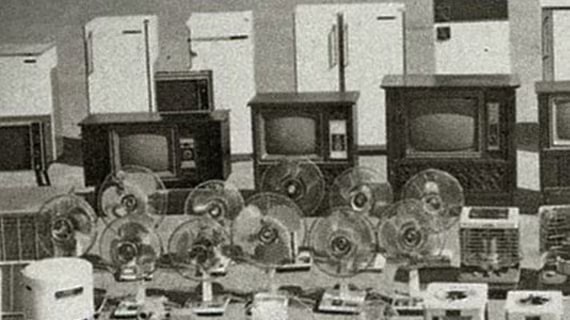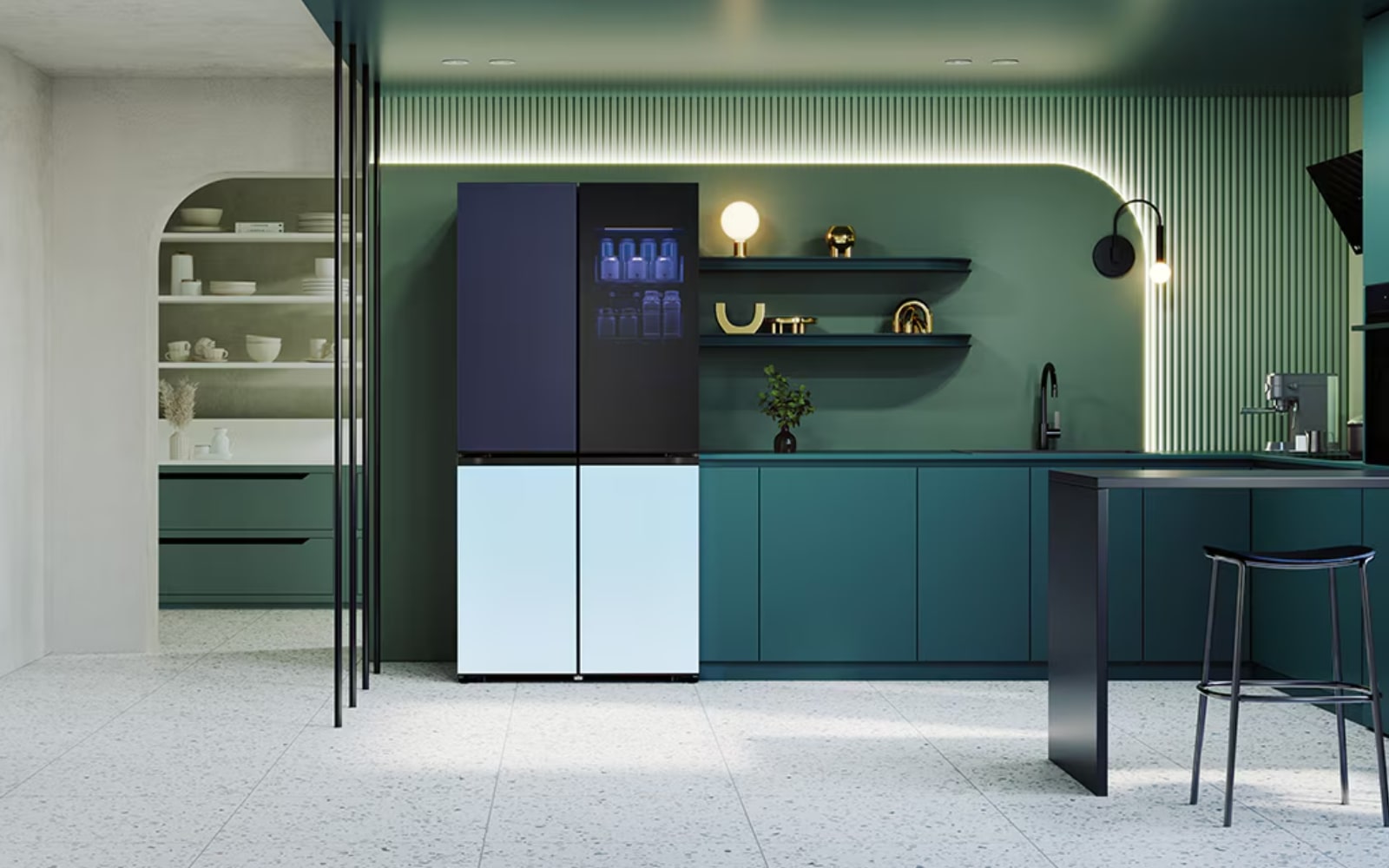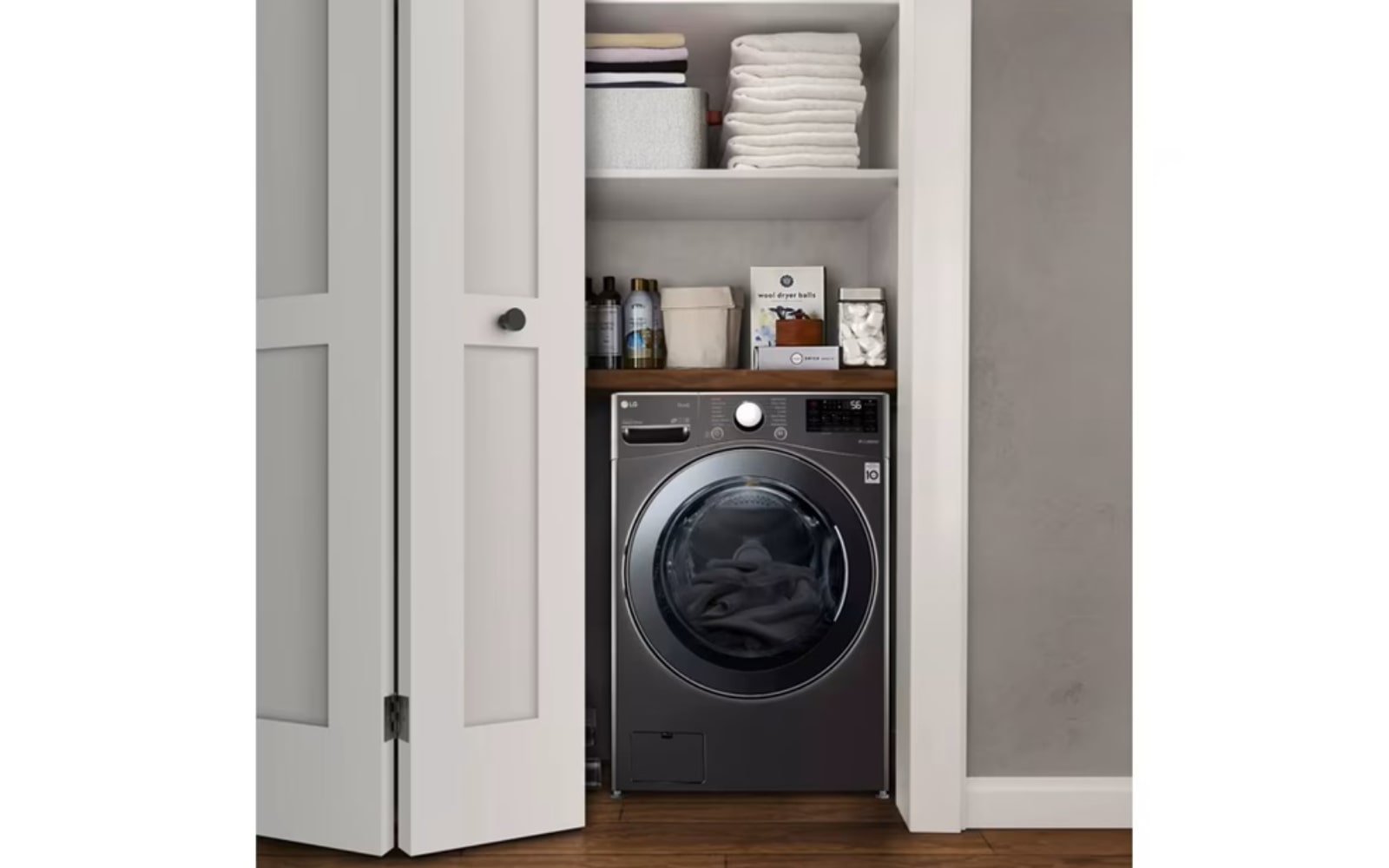We use cookies, including cookies from third parties, to enhance your user experience and the effectiveness of our marketing activities. These cookies are performance, analytics and advertising cookies, please see our Privacy and Cookie policy for further information. If you agree to all of our cookies select “Accept all” or select “Cookie Settings” to see which cookies we use and choose which ones you would like to accept.
Helpful Hints
Refrigerators Through the Decades
Discover the evolution of refrigerators, from how food was preserved before to LG’s latest innovations. Learn more!
From Invention to Innovation: The Evolution of the LG Refrigerator
Can you imagine a world without refrigerators? These essential appliances have dramatically evolved from their humble beginnings to become essential to modern kitchens across the world. Today, we not only store food but rely on refrigerators to keep our food safe.
The Importance of Refrigeration
Refrigerators are more than just food storage units; they are the heart of food safety and management in our homes. By controlling temperature and sealing food away from bacteria, fridges keep our meals fresh until the expected expiry date, preventing costly food wastage and health issues related to spoiled foods. This is crucial not only for our health but also for our finances, as spoiled food can lead to unnecessary expenses.
Proper food storage helps in preserving the taste, smell, and texture of food. Spoiled food not only loses its nutritional value but can also taste, smell, and feel off, making it unappetising and unsafe to consume. Therefore, taking food storage seriously is essential to ensure that we enjoy our meals and stay healthy.
A Brief History of Refrigeration
Refrigerators, as we know them today, weren't invented until the 1800s. The journey from the conception of artificial refrigeration to the first home electric fridge was long and filled with innovative milestones. The initial idea of artificial refrigeration dates back to 1748, when physicist William Cullen demonstrated the first artificial refrigeration process. However, it wasn't until 1834 that Jacob Perkins built the first practical refrigerating machine, using ether in a vapour compression cycle.
In 1913, Fred Wolf invented the first domestic refrigerator, which featured a refrigeration unit on top of an icebox. By 1918, mass production of domestic refrigerators began after William Durant introduced the self-contained compressor, marking the start of the widespread use of refrigerators in homes. The introduction of Freon in the late 1920s made refrigerators safer and more affordable, transforming how people stored their food and leading to the decline of the icebox.
Before Modern Refrigerators
Before the advent of modern refrigerators, our ancestors used natural cooling methods and various preservation techniques to keep food from spoiling. They stored food in snow, ice, lakes, and rivers or used methods like pickling, fermenting, salting, sugaring, and dehydrating in an effort to extend the food’s lifespan. How was ice made before refrigeration became common place? People harvested ice from frozen lakes and rivers during winter and stored it in icehouses insulated with straw or sawdust. While these methods were effective to some extent, they often altered the taste and texture of the food and were not as reliable as modern refrigeration.
Milestones in Refrigerator Design
1910s: Mass Production of Domestic Fridges
The first air-cooled refrigeration unit for home use was invented in 1913, featuring a refrigeration unit on top of an icebox. By 1918, mass production of domestic refrigerators began, making them more accessible to the general public. This marked the beginning of the widespread use of refrigerators in homes, an important moment in the fridge timeline.
1920s: The Invention of New Refrigerants
In 1927, General Electric (GE) introduced the first affordable hermetically sealed refrigeration system, revolutionising the market. Early refrigerators used toxic gases as refrigerants, which caused several fatal accidents due to gas leaks. In 1928, Thomas Midgley, Jr., and Charles Kettering developed Freon, a safer refrigerant that replaced the toxic gases by 1929. This significant advancement made refrigerators safer and more reliable, marking another key point in refrigerator history.
1930s: Radical Changes to Refrigerators
During the 1930s, manufacturers began replacing sulphur dioxide with Freon 12 as the refrigerant. This decade also saw the introduction of isolated freezer compartments for ice cubes, providing a new level of convenience for consumers.
1940s: Introducing Bottom-Freezers
In 1947, Amana introduced the first bottom-freezer model, followed by the side-by-side fridge in 1949. These innovations provided consumers with more storage options and easier access to frequently used items, further advancing the fridge timeline and contributing to the evolution of new technology in refrigerators.
1960s: LG’s First Refrigerator
In 1965, LG released its first refrigerator, marking the company's entry into the appliance market. This decade also saw the introduction of the first refrigerator with an automatic ice dispenser by Frigidaire, allowing consumers to dispense ice directly from the freezer door without opening it. The 1960s also popularised the vintage Smeg style, featuring soft edges and curves in refrigerator design.
1970s: Energy Efficiency
The 1970s saw a rise in the popularity of compact mini-fridges and a growing emphasis on energy efficiency. New standards introduced by various governments globally led to the design of energy-efficient fridges and appliances, reducing energy consumption and environmental impact.
1980s: Introducing Water Dispensers
In 1987, Amana introduced the first fridge with a built-in water dispenser, offering consumers added convenience. This feature spearheaded the integration of new functionalities into kitchen appliances, enhancing their utility and appeal, and furthering the development of new technology in refrigerators.
1990s: New Fridge Aesthetics and Energy Efficiency
The 1990s brought about the popularisation of French door refrigerators, featuring a two-door fridge space on top and freezer drawers below. These models typically had stainless steel facades, adding a sleek and modern look to kitchens. The decade also saw the launch of the ENERGY STAR program by the U.S. Environmental Protection Agency in 1992, promoting energy-efficient appliances and homes.
2000s: The Dawn of Smart Fridges and More Doors
The 2000s marked the advent of smart refrigerators with touchscreen interfaces and internet connectivity. LG launched one of the first smart fridges, the Internet Digital DIOS model, in June 2000, which featured a price tag of over NZD$20,000. Four-door models offering more flexible storage options and better space management became popular during this time. LG continued to innovate with high-tech fridges, introducing features like DoorCooling+™ and LINEARCooling™ systems to keep food fresher for longer.
2010s: Efficiency Advancements
In 2014, new efficiency standards were introduced, reducing energy usage for most fridges by 20-25%. These advancements allowed refrigerators to become more energy-efficient while increasing functionality and storage space.
2020s: Finetuning Fridge Temperatures
The 2020s have seen a focus on sustainability and precise temperature control in refrigerators. With LG's FRESHConverter, users can control the fridge’s temperature to maintain the optimal condition of meat, fish, and vegetables, helping to reducing food spoilage and waste. LG's Fridge-Freezer, featuring LinearCooling™ technology aimed to reduce temperature fluctuations, offers an elegant and practical refrigeration solution.
LG Refrigerator Innovations
InstaView™ Refrigerators
LG's InstaView™ Refrigerators feature a tinted glass panel that illuminates with two knocks, allowing users to see inside the fridge without opening the door. This innovation helps reduce cold air loss, thus helping keep food fresher for longer. With over 10 InstaView™ models available, LG offers a variety of sizes, volumes, and price points to suit different needs. These features are part of LG's commitment to advancing new technology in refrigerators, ensuring they meet the diverse requirements of modern households.
Side by Side Refrigerators
The Side by Side fridge, sometimes referred to as the American Style Fridge, remains popular today. These models feature two adjacent doors, with a narrower freezer compartment and a wider fridge compartment. LG's Side by Side Fridges include innovative features like InstaView™ and DoorCooling+™ which have been developed to help maintain temperature balance in the fridge thus helping to keep food fresh for longer.
Customisation: Fitting into your Kitchen Aesthetics
Modern refrigerators prioritise not only functionality but also aesthetics. LG offers various fridge models that can seamlessly be integrated into any kitchen decor, featuring finishes like stainless steel and matte white. For those seeking a built-in look, flat door fridges with hidden hinges provide a sleek and stylish option.
Other Fridge Solutions: Wine Cellar Fridges
Wine cellar fridges are specialised appliances designed to maintain the precise temperature and humidity levels necessary for storing and aging wine. Unlike standard refrigerators, which is susceptible to fluctuations in temperature that may harm the delicate balance of a fine wine, wine cellar fridges is built to create a stable environment to help ensure that each bottle reaches its full potential.
LG SIGNATURE 65 Bottle Wine Cellar fridge is equipped with advanced technology to keep your collection in optimal conditions, providing features like multi-temperature zones to store different types of wine at their ideal temperatures. This ensures that each bottle, whether it's a red, white, or sparkling wine, is stored under the best possible conditions for each type.
This fridge also incorporates UV-resistant glass doors to protect your wine from harmful light exposure and vibration control systems to prevent disturbances that could affect the aging process. Whether you're a casual enthusiast or a dedicated connoisseur, LG SIGNATURE 65 Bottle Wine Cellar Fridges ensure that your wines are preserved perfectly, ready to be enjoyed at any moment.
Looking to the Future: LG's Continued Innovation
The journey from old iceboxes to today's smart refrigerators showcases the incredible advancements in home appliance technology. Early 20th-century innovations laid the groundwork for the specialised and efficient refrigerators we have now. These appliances have transformed from simple food storage units to essential kitchen hubs, blending technological advancements with consumer preferences.
LG continues to lead the way in refrigerator innovation, ensuring that our kitchens not only function efficiently but also embody modern style and convenience. We believe in making life good by enhancing home life with our innovative appliances. Explore our latest refrigerator models and see how LG continues to innovate and redefine the modern kitchen.
We can’t imagine a world without refrigerators and thankfully, we don’t ever have to.
Life’s Good



.png)
.png)
